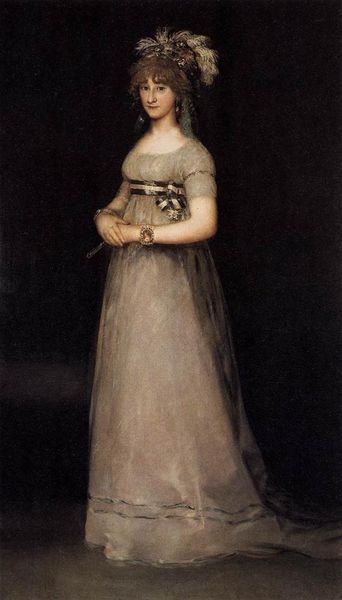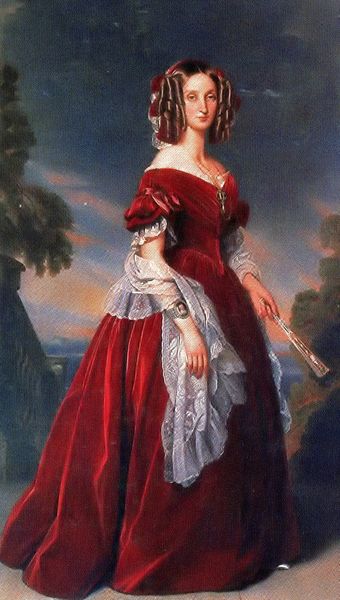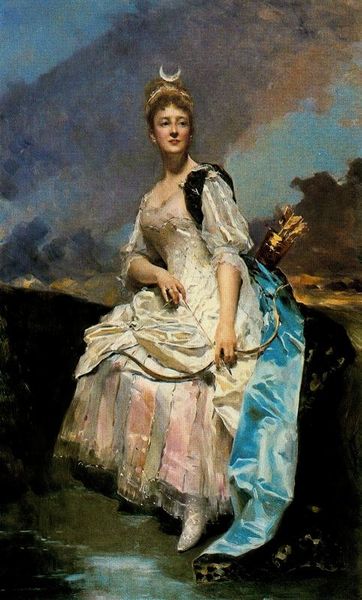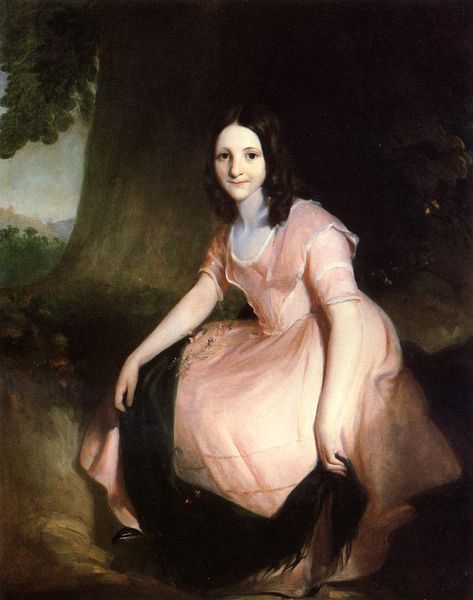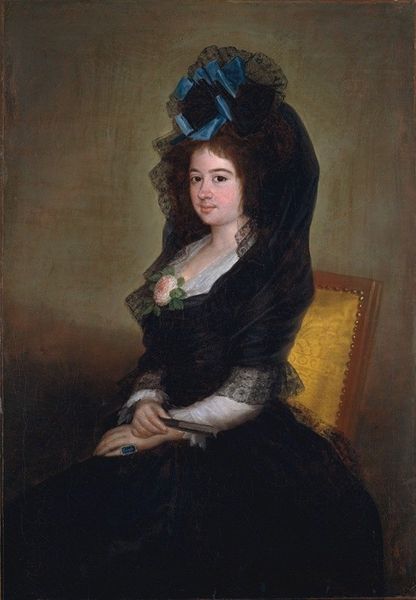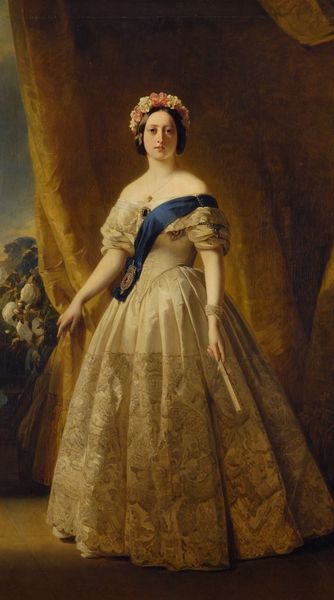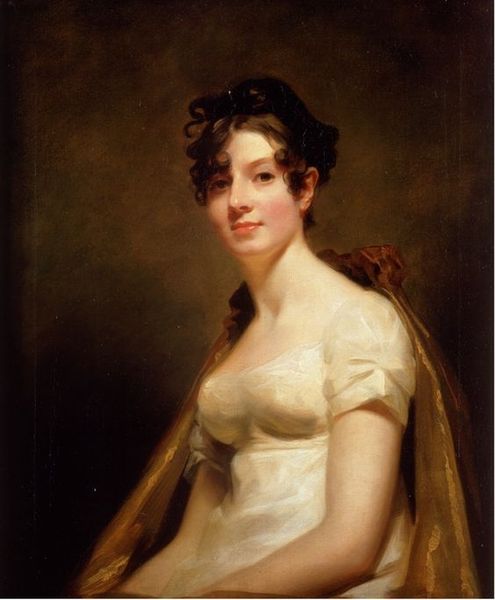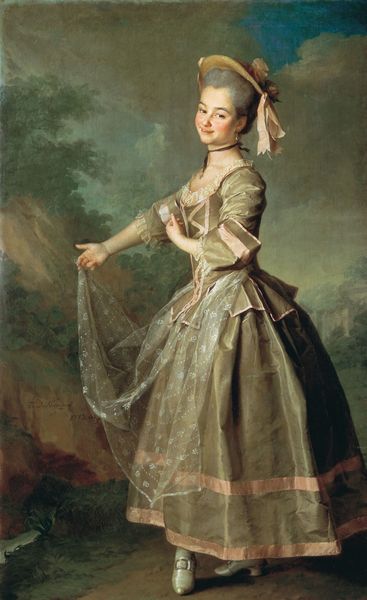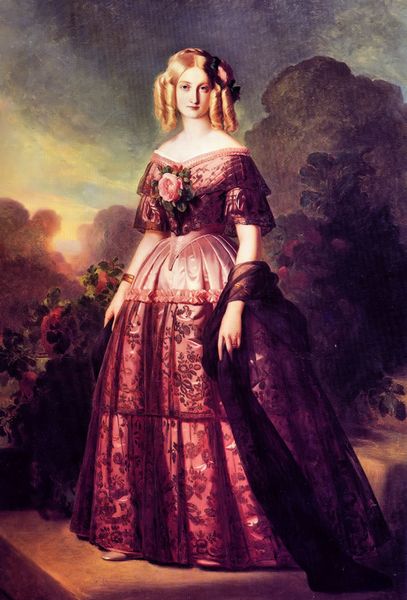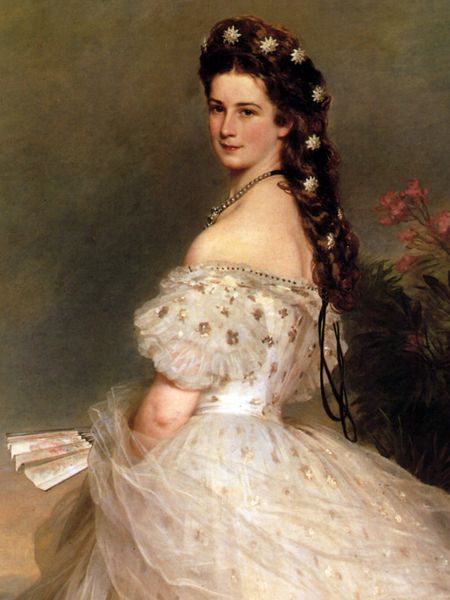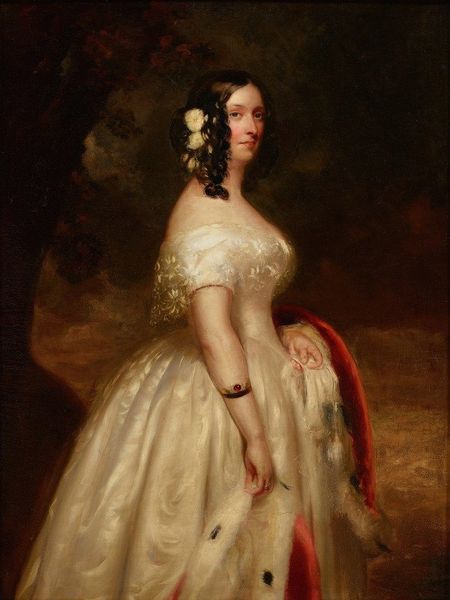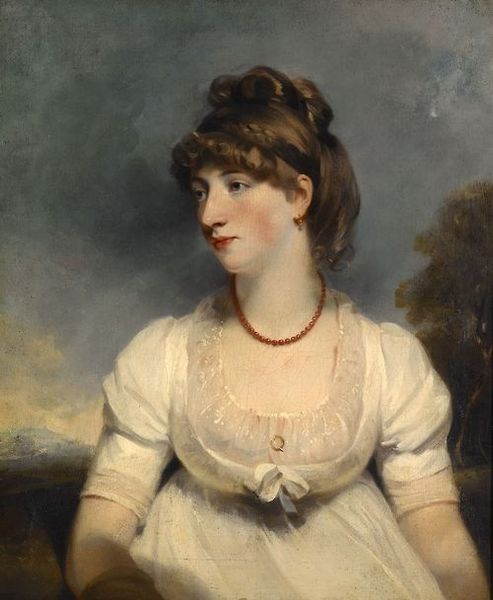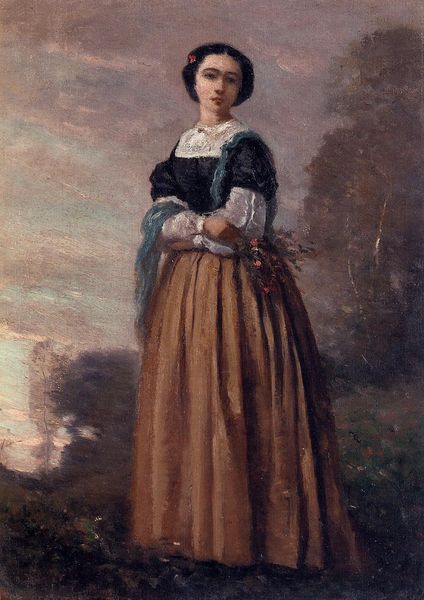
painting, oil-paint
#
portrait
#
neoclacissism
#
painting
#
oil-paint
#
history-painting
#
realism
Dimensions: 181 x 122 cm
Copyright: Public domain
Francisco de Goya painted Dona Tadea Arias de Enriquez, likely in Madrid, during the late 1700s. The portrait, rendered in oil on canvas, presents a member of the Spanish elite, amidst a backdrop that blends aristocratic formality with emerging romantic sensibilities. The painting offers insights into the cultural norms of its time. Dona Tadea’s dress and hairstyle reflect the fashions of the Spanish court, signaling her high social status. Yet Goya’s approach subtly challenges these conventions. Her gaze is direct, her posture relaxed, hinting at an individual personality beyond the confines of her social role. Moreover, the inclusion of heraldry alludes to Spain's intricate class structure, a system that was facing increasing social and political pressure. Goya’s career developed under the patronage of the royal court, but it eventually reflected the liberal ideas gaining ground in Spanish society. To fully understand this work, examining court records, fashion trends, and the writings of Enlightenment thinkers is essential. These resources provide context, revealing the complex interplay between artistic expression and social change.
Comments
No comments
Be the first to comment and join the conversation on the ultimate creative platform.
